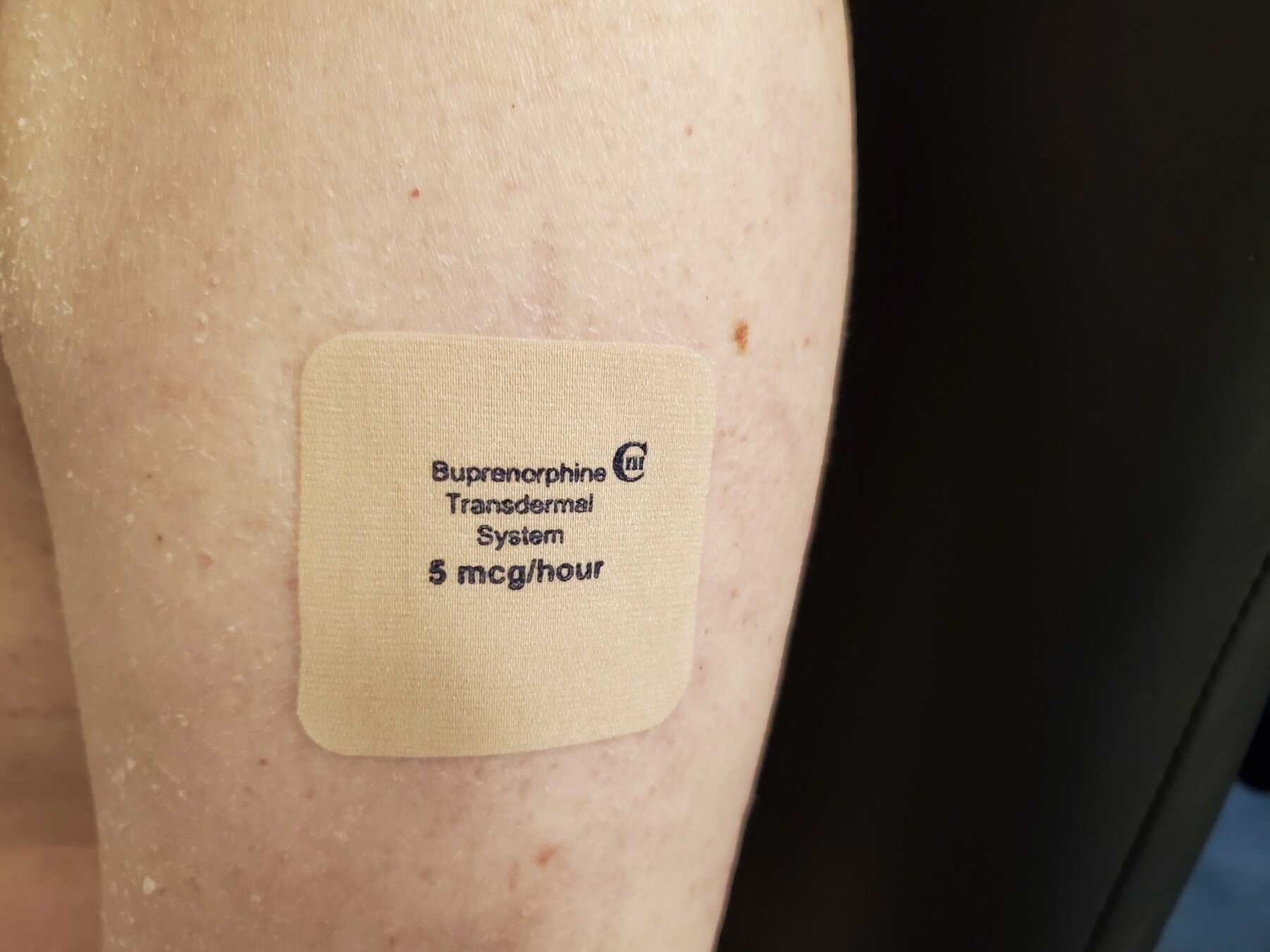More consultations lead to possible solution for recent tailbone pain
Referring patients to other doctors may be necessary for chronic pain

Michael is now using a bupenorphine transdermal patch for some pain he's experiencing. Photo courtesy of Michael Morale
I’ve been working with a patient, Michael, who has spinal muscular atrophy. Michael uses a motorized wheelchair, and recently moved to a new chair. Since then, he has experienced increased right hip and tailbone pain off and on with numbness down his right leg as he’s tried to get used to the new cushion and chair.
We have performed many activities that reduced pain in the tailbone as well as reduced symptoms down the leg, such as coccyx mobilizations, dry needling around the coccyx (tailbone), and stretching the lower extremities. Since he’s continued to have pain, we consulted with a representative from the wheelchair company, who provided some suggestions.
Despite this, he’s still having some pain, so his primary care doctor suggested he make an appointment with a neurosurgeon to have them look at his coccyx and give their expert advice as to what options there are for increasing his comfort while sitting.
During this appointment, the doctor told Michael that from his viewing the scans, there wasn’t anything he would be able to do at this time from a surgical standpoint. He mentioned Michael’s coccyx looked fine and more in midline, so we should continue with the manipulations performed in physical therapy. He suggested Michael refer back to his pain management doctor for pain medication. He mentioned the possibility of using different types of pain-medicated patches that would last for several days.
Michael reached out to his pain management doctor, where he was prescribed a pain patch that he would wear for seven days to try out. Michael will reach out with the results of the pain patch to let her know how he’s feeling. After that, she will reassess and decide if he will stay on that medication or try a different one.
Another topic discussed over the past few articles is the adjustments made to his wheelchair. The wheelchair representative moved Michael’s cushion back to allow him to sit correctly on the cushion. There is a slope in the back of the cushion where his tailbone should be sitting, although the cushion was too far forward and didn’t allow him access.
Now that the cushion has been moved, Michael has been able to sit more comfortably than previously. His main complaint now is that his right leg goes numb after sitting for so long. After looking into his positioning, the wheelchair representative will come out to look at raising his footrests to allow for more hip flexion and reduce the pressure on the back of his leg from his cushion.
If these adjustments do not help reduce the numbness, we will continue to monitor and change positioning as well as perform different techniques and modalities to reduce this numbness as much as we can. Our goal will remain to improve Michael’s comfort and allow for increased time in his wheelchair. The longer he is able to maintain being in his chair, the more independence he has. If he isn’t able to tolerate being in his chair, he will be limited in the places he can go and time away from his home. With the increase in discomfort, he was spending more time in bed, which increases the risk of other complications, such as pressure sores.
As always, we will continue to have an open line of communication between Michael and I as well as everyone else on the team. He will always be able to lead his treatments to ensure the focus is on his goals, and that he is comfortable and confident in his treatments.
Patient perspective
I’ve always had a fear of becoming addicted to opioids, especially with the increase in opioid addiction today. When I saw my pain doctor, we had a long discussion about that fear, and she was able to ease my mind regarding this topic. She told me the majority of opioid addictions are caused by patients who were given opioids, either after surgery or for pain they were experiencing during rehab of an injury. She told me these patients were probably not titrated down when coming off the opioid they were prescribed.
While some people think quitting cold turkey is the way to stop taking opioids, patients need to remain on their opioids, and over time, take fewer over a given time period. This slow reduction in the amount they may take will give their bodies time to adjust, and even though this may take time, it’s the only way to successfully come off of opioids and allow the body to function properly.
At the time I’m writing my segment of this article, I’ve been on a buprenorphine transdermal patch for almost a week, which is giving me 5 micrograms an hour of medication. I have noticed a small decrease in the pain in my upper glutes, but she may need to increase this from 5 mcg/hour to 10 mcg/hour.
We all face fears as we get older, but I’m lucky to have a great physical therapist and pain doctor who are helping me.


